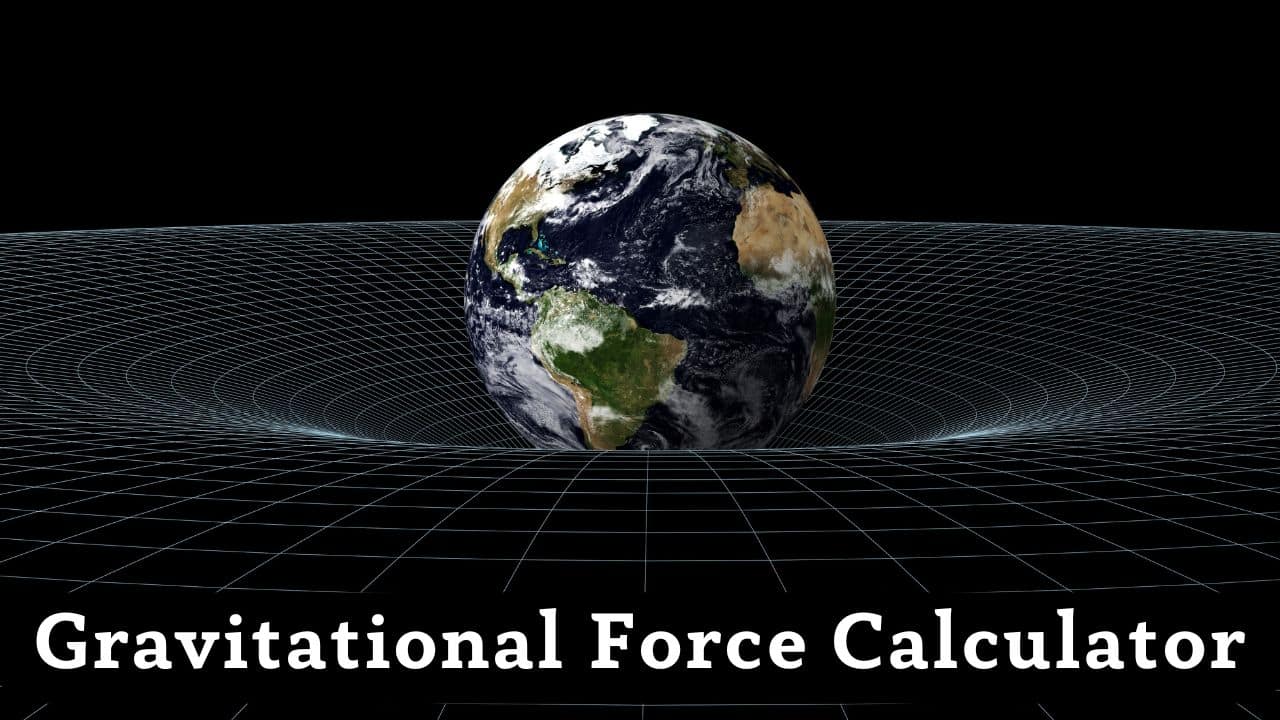
Gravitational Force and Universal Gravitation
Explore the fundamental force that governs celestial mechanics and planetary motion!
What is Gravitational Force and Why is it Important?
Gravitational force is the attractive force between any two objects with mass. It’s one of the four fundamental forces of nature and governs everything from falling apples to planetary orbits. Understanding gravitational force is essential for space exploration, satellite technology, and comprehending the structure of the universe.
Why Gravitational Force matters: This universal force shapes the cosmos, determines planetary orbits, controls tides, and enables space missions. It’s fundamental to astrophysics, engineering, and our understanding of the universe. Learn more about gravitational force and its applications in physics and astronomy.
Types of Gravitational Calculations:
- Basic Gravitational Force: Newton’s universal law F = Gm₁m₂/r²
- Weight Calculations: Force due to gravity on Earth’s surface
- Orbital Mechanics: Circular and elliptical orbital velocities
- Escape Velocity: Minimum speed to escape gravitational pull
- Gravitational Fields: Force per unit mass at any point
- Tidal Forces: Differential gravitational effects
Newton’s Law of Universal Gravitation
Newton’s Law of Universal Gravitation states that every particle in the universe attracts every other particle with a force proportional to the product of their masses and inversely proportional to the square of the distance between them.
Fundamental Gravitational Equations:
Universal Gravitation:
F = Gm₁m₂/r²
Where G = 6.674 × 10⁻¹¹ N⋅m²/kg²
Weight on Surface:
W = mg
Weight equals mass times gravitational acceleration
Orbital Velocity:
v = √(GM/r)
Velocity for circular orbit at radius r
Escape Velocity:
v_e = √(2GM/R)
Minimum velocity to escape gravitational field
Gravitational Field:
g = GM/r²
Gravitational acceleration at distance r
Orbital Period:
T = 2π√(r³/GM)
Kepler’s Third Law for orbital period
Key Physics Principles:
- Universal Nature: Gravity acts between all objects with mass
- Inverse Square Law: Force decreases with square of distance
- Mass Dependence: Force proportional to product of masses
- Action-Reaction: Gravitational forces are always mutual
- Field Concept: Gravity creates a field in space around masses
- Orbital Mechanics: Balance between gravity and centrifugal force
Gravitational Constants and Celestial Bodies
Gravitational calculations often involve astronomical objects with well-known properties. Understanding these constants and celestial body characteristics is essential for accurate calculations.
Gravitational Accelerations on Different Bodies:
| Celestial Body | Surface Gravity (m/s²) | Mass (kg) | Radius (km) | Escape Velocity (km/s) |
|---|---|---|---|---|
| Earth | 9.81 | 5.97 × 10²⁴ | 6,371 | 11.2 |
| Moon | 1.62 | 7.35 × 10²² | 1,737 | 2.4 |
| Mars | 3.71 | 6.42 × 10²³ | 3,390 | 5.0 |
| Jupiter | 24.79 | 1.90 × 10²⁷ | 69,911 | 59.5 |
| Sun | 274 | 1.99 × 10³⁰ | 696,000 | 617.5 |
| Venus | 8.87 | 4.87 × 10²⁴ | 6,052 | 10.4 |
Units and Measurements in Gravitational Calculations
Consistent units are crucial for accurate gravitational calculations. Understanding mass, distance, and force units across different scales ensures reliable results in physics and astronomy.
Common Units and Conversions:
| Quantity | Unit | Symbol | Conversion | Common Use |
|---|---|---|---|---|
| Mass | Solar Mass | M☉ | 1.99 × 10³⁰ kg | Stellar masses |
| Mass | Earth Mass | M⊕ | 5.97 × 10²⁴ kg | Planetary masses |
| Distance | Astronomical Unit | AU | 1.496 × 10¹¹ m | Solar system distances |
| Distance | Light Year | ly | 9.461 × 10¹⁵ m | Interstellar distances |
| Distance | Earth Radius | R⊕ | 6.371 × 10⁶ m | Planetary radii |
| Force | Newton | N | kg⋅m/s² | All force calculations |
Practice Problems and Worked Solutions
Problem 1: Basic Gravitational Force
Question: Calculate the gravitational force between Earth (5.97 × 10²⁴ kg) and Moon (7.35 × 10²² kg) separated by 384,400 km.
Click to see detailed solution
Given: m₁ = 5.97 × 10²⁴ kg, m₂ = 7.35 × 10²² kg, r = 3.844 × 10⁸ m
Formula: F = Gm₁m₂/r²
Calculation: F = (6.674 × 10⁻¹¹)(5.97 × 10²⁴)(7.35 × 10²²)/(3.844 × 10⁸)²
Answer: F = 1.98 × 10²⁰ N
Problem 2: Weight on Different Planets
Question: A 70 kg astronaut’s weight on Mars (g = 3.71 m/s²) compared to Earth.
Click to see detailed solution
Given: m = 70 kg, g_Mars = 3.71 m/s², g_Earth = 9.81 m/s²
Earth Weight: W_Earth = mg = 70 × 9.81 = 686.7 N
Mars Weight: W_Mars = mg = 70 × 3.71 = 259.7 N
Answer: Weight on Mars is 37.8% of Earth weight
Problem 3: Orbital Velocity
Question: Calculate the orbital velocity of the International Space Station at 408 km altitude above Earth.
Click to see detailed solution
Given: M_Earth = 5.97 × 10²⁴ kg, altitude = 408 km, R_Earth = 6,371 km
Orbital radius: r = 6,371 + 408 = 6,779 km = 6.779 × 10⁶ m
Formula: v = √(GM/r)
Calculation: v = √((6.674 × 10⁻¹¹)(5.97 × 10²⁴)/(6.779 × 10⁶))
Answer: v = 7.66 km/s or 27,576 km/h
Problem 4: Escape Velocity
Question: Calculate Earth’s escape velocity from its surface.
Click to see detailed solution
Given: M_Earth = 5.97 × 10²⁴ kg, R_Earth = 6.371 × 10⁶ m
Formula: v_e = √(2GM/R)
Calculation: v_e = √(2 × 6.674 × 10⁻¹¹ × 5.97 × 10²⁴ / 6.371 × 10⁶)
Answer: v_e = 11.18 km/s
Problem 5: Gravitational Field Strength
Question: Calculate gravitational field strength at the Moon’s distance from Earth.
Click to see detailed solution
Given: M_Earth = 5.97 × 10²⁴ kg, r = 3.844 × 10⁸ m
Formula: g = GM/r²
Calculation: g = (6.674 × 10⁻¹¹)(5.97 × 10²⁴)/(3.844 × 10⁸)²
Answer: g = 2.70 × 10⁻³ m/s²
